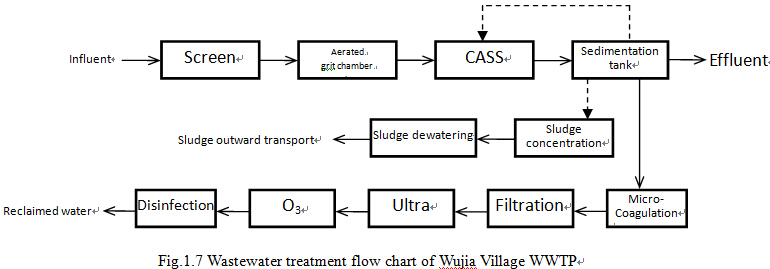Wujia village Wastewater Treatment Plant
chinagate.cn, March 22, 2015 Adjust font size:
Beijing Municipal Research Institute of Environmental Protection recently issued a survey report entitled "Technical report on typical wastewater treatment in North China". The research team carried out the investigation of wastewater treatment technologies in Beijing and Hebei provinces that may be suitable for adoption in Africa.
The investigation consists of field research and information provided by company, focusing on the wastewater treatment process, investment costs, operating costs, treatment capacity, occupation area, inflow conditions and water quality and other aspects.
Wujia village WWTP was built in the upper reaches of Xinkai canal, and its service area is the western district of Beijing with the scope of Muoshikou in the north, Xibianmen express way in the south of Lugu community in the south, the west of Yang village eastern road in the west, and Yuquan road in the east. Watershed area is planned to treat wastewater covering an area of about 14.5 square kilometers. The total investment of the project is 340 million RMB, of which US$ 16.99 million is from World Bank loan and 199 million RMB is from domestic counterpart funds.
The technology used is cyclic activated sludge (CASS process) and has a design daily wastewater treatment capacity of 80,000 cubic meters which provides water sources to Xinkai canal and reclaiming water plant. The effluent water quality meets GB18918-2002 standard B (table 1.1). After being dehydrated mechanically, dewatered sludge with moisture content of 60% to 65% is transferred to sludge disposal center to be treated with sludge drying and sludge digestion. Biogas generated during digestion is collected and digested effluent is transferred to the farmland as fertilizer. The sludge after being treated properly can be utilized as a renewable resource such as organic nutrient soil, fuel, and construction material etc.
The secondary effluent of Wujia village WWTP is used as a water resource. The secondary effluent treatment process uses micro-flocculation process to treat wastewater for reclaimed water. Suspended solids and colloidal particles in wastewater are removed by homogenized media filter after the wastewater has been reacted with coagulant. After disinfection by ultraviolet light, dioxide chlorine and ozone, the water from the filter pond is provided to users with the water quality standard meeting the urban miscellaneous water quality standard and landscape water standard (table 1.3).


